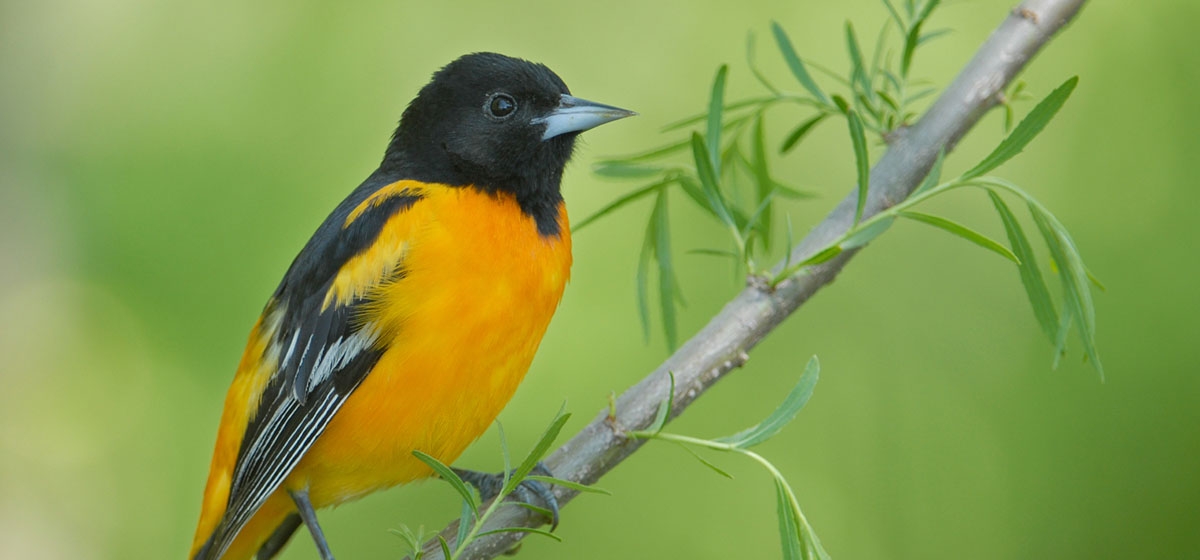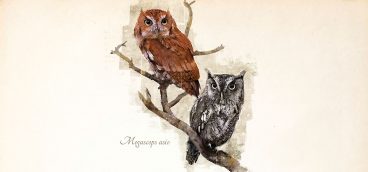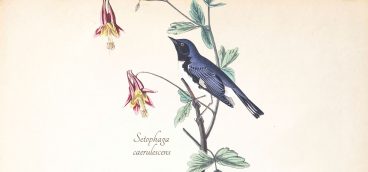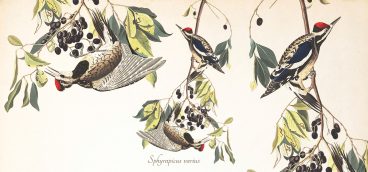
There is a reason i am a birder and not a surgeon. As I was driving one spring, I passed something bright orange on the side of the street. I couldn’t quite make it out, but I had my suspicions. Like many birders, I’m willing to watch a bird wherever it might be: perched on a twig, swimming in a pond, soaring over Sandcastle, downtown in a park. Yes, this bird was in a roadside gutter, but I knew when I passed it that only meant I’d get an even better look. Roadkill birds also count.
It was a male Baltimore Oriole, black head, black wings, chest a deep orange-red flame. It’s a bird that builds a pendulum nest of straw and grasses, a sack suspended midair from a branch. A beautiful bird with a patch of feathers that I couldn’t mat down—the point of impact with a car that it hadn’t noticed because it was likely chasing a female. I took it home, limp, but otherwise unblemished, and too beautiful for the berm. My wife, however, found it in our freezer and told me it had to go, ziplocked sarcophagus be damned.
Like many birders, I have a decent library of ornithological works: field books, species accounts, finding guides, anatomical manuals. It was the latter, the least paged through, that I turned to after seeing the oriole. I remembered a chapter on how to prepare a “study skin,” a taxidermied bird, and that’s what I would attempt. (I later learned federal and state permits are required to do this, so check before you collect any migratory bird.)
My goal was to remove the muscle and organs from inside of the bird, an avian evisceration that would leave skin, body feathers, wings, and legs intact. Everything would look like oriole on the outside, but the interior would be a hollow cavity I’d fill with cotton. In the end the bird would be preserved: beak, body, scaly legs and tiny talons, tail all aligned, wings folded against the flanks. The thin skin would dry and the keratin feathers would last for years, centuries even.
A biology teacher friend loaned me a scalpel and other instruments. I thawed the bird and studied the book. The last time I’d dissected anything was ninth grade science. Worms and frogs. Pretty basic. Formaldehyde, red arteries, blue veins—don’t chase the girls with the parts—bag it all up before the end of class. I laid the oriole on his back and made the vertical midline incision just as the book showed. The skin stretched back and there was the bird.
Somehow, something had changed. Before me were real organs, muscles, bones, so different from the simple lifeless sketches in the book. I began to follow the directions of the manual: sever this, detach that. Stretch the wings wide and away from the body and clip the connection between the wing bone and the muscles that power them. Use cotton wads to restore the natural contours of the head, fill the cavities I’d emptied. Return to a natural position.
I had to stop several times, walk outside, and fight the dizzy feeling. There was something about having the oriole there in my hands that brought mortality and these creatures I love to watch—animated, so alive, so free—rushing together. The contrast of this bird’s black and fiery orange beauty and the finality of its death was almost overwhelming. And I’m a chicken eater.
In fact, the textbook remarked that the remains look like a miniature roasting chicken. And so they do, but I had no designs on that part of my oriole. I’m a purist only to a point. I followed the next steps: take a small wooden dowel, build a body of cotton to match the size and shape of the original viscera, insert. Sew incision closed and fluff the feathers back. Done. An oriole on a stick.
Now, when I teach kids about birds, such study skins make for wonderful props. They look at them with a mix of awe and revulsion, so removed themselves from the natural world and its small studies in living and dying.
After checking regulations of the U.S. Fish and Wildlife Service and relevant state agencies, readers may want to read Noble and Proctor’s “Manual of Ornithology” for details about how to save and stuff birds. Pittsburgh’s Carnegie Museum of Natural History houses one of the world’s premier collections of such specimens.





